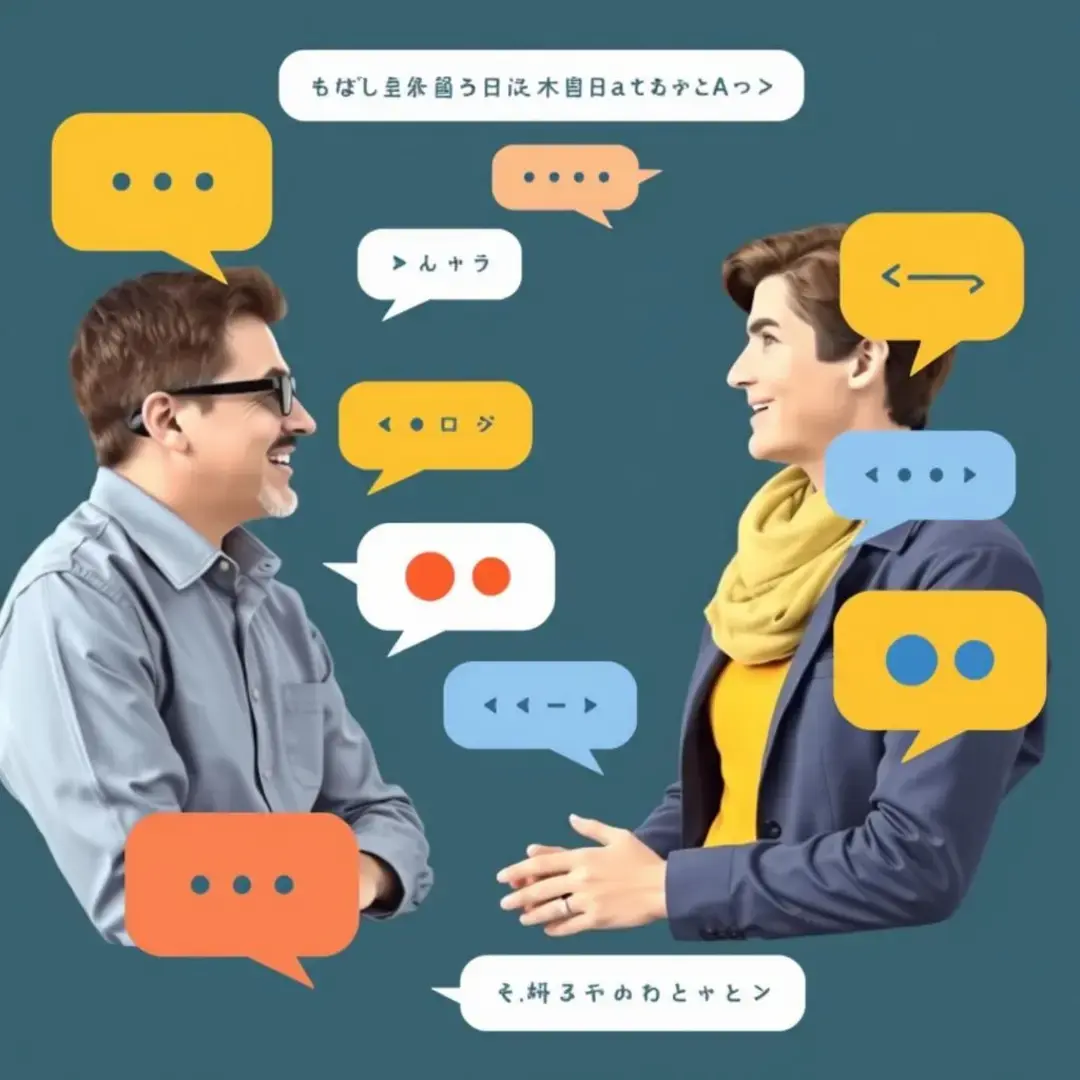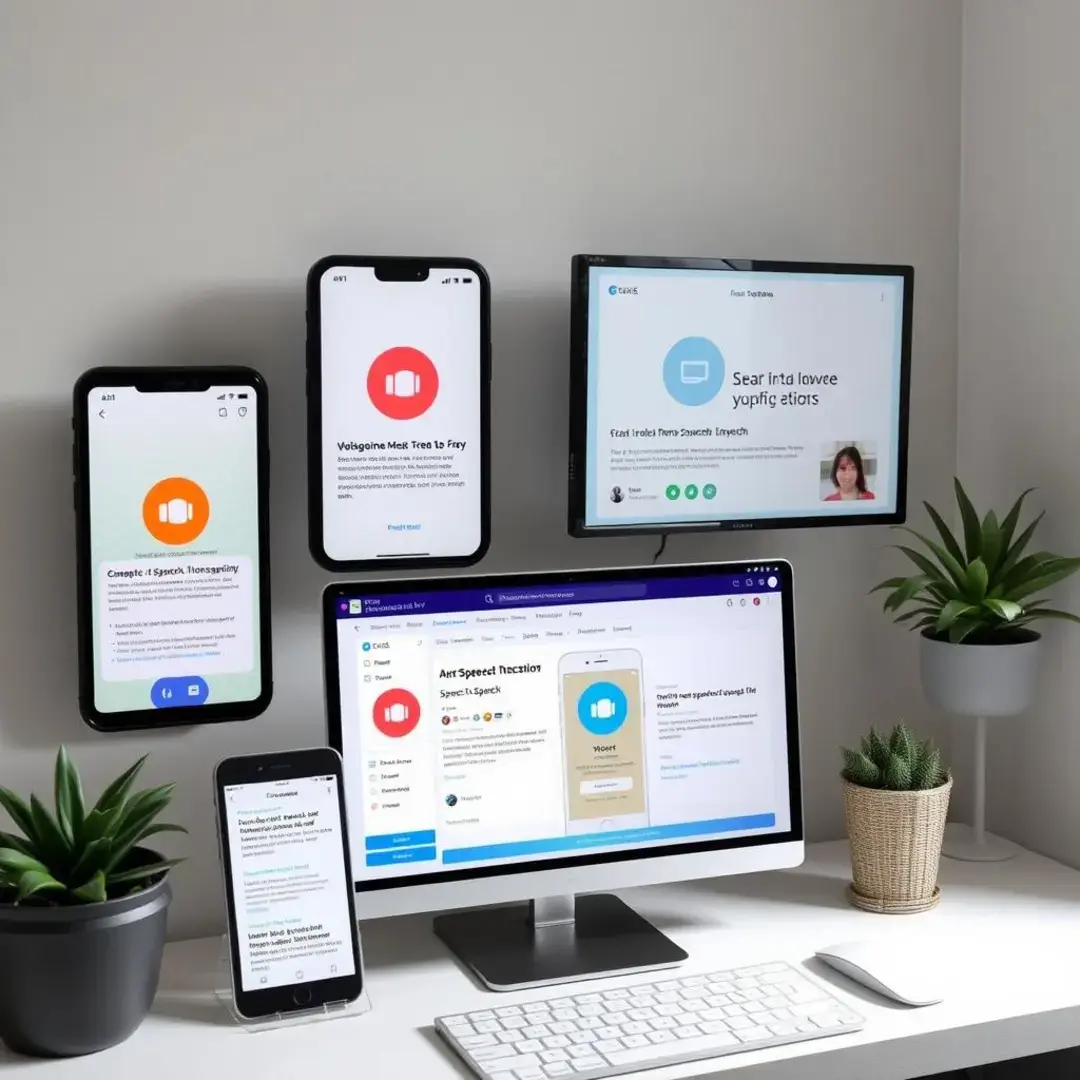Speech-to-Speech Translation
Introduction

Overview of Speech-to-Speech Translation in Real-Time Translation Tools
Speech-to-speech translation is a cutting-edge technology that enables real-time conversion of spoken language into another spoken language. This process involves sophisticated algorithms and artificial intelligence to not only translate the words but also interpret their meaning, tone, and context. By leveraging advancements in natural language processing (NLP), these tools can provide a fluid conversation experience, making communication across language barriers possible.
Unlike traditional text-based translation, which requires the user to input written words, speech-to-speech translation operates audibly. This dynamic approach is particularly useful in scenarios where immediate understanding is critical, such as during international meetings, travel, or healthcare. By focusing on spoken communication, it can bridge cultural gaps in ways that previous methods couldn’t achieve.
The market for speech-to-speech translation tools is rapidly evolving, with several major tech companies now developing their own solutions. From mobile applications to integrated systems in conference rooms, these tools are becoming more accessible. Users now have a variety of options, each with unique features designed to cater to different use cases, leading to near-instantaneous communication globally.
Key Trends in Speech-to-Speech Translation

Emerging Trends
Artificial intelligence is the backbone of modern speech-to-speech translation systems. Continuous improvements in machine learning algorithms have enhanced accuracy and fluency, allowing for more natural-sounding translations. Techniques such as neural networks are employed to train these systems, enabling them to learn from vast datasets and improve over time.
As AR/VR technologies advance, their integration with speech-to-speech translation tools is becoming more prominent. This allows for immersive experiences where users can communicate across languages in real time, as if they were speaking face-to-face. The potential applications in gaming, training simulations, and virtual conferences are immense, providing unique opportunities for global interaction.
Historically, most translation technologies have centered on widely spoken languages. However, there is now an increased emphasis on supporting low-resource languages. This trend not only seeks to preserve linguistic diversity but also aims to improve accessibility for speakers of these languages, making global communication more equitable.
Industry Impact
In the corporate world, speech-to-speech translation tools are revolutionizing the way professionals communicate. With businesses rapidly expanding into international markets, these tools facilitate smoother negotiations and collaborations. Miscommunications can lead to costly errors; thus, having reliable translation solutions is invaluable in today’s global economy.
The travel industry has significantly benefited from the rise of speech-to-speech translation tools. Tourists can engage with locals seamlessly, enhancing their travel experience. Whether navigating directions or ordering food, real-time translation removes language barriers, allowing for richer cultural exchanges and interactions.
In the realms of education and healthcare, speech-to-speech translation is proving to be transformative. Educational institutions can now embrace diverse classrooms with students from different linguistic backgrounds. Similarly, healthcare professionals can facilitate better communication with non-native speaking patients, ensuring that crucial medical information is conveyed accurately.
Challenges and Limitations
Despite significant advancements, challenges remain regarding the accuracy and fluency of translations. Nuances, cultural idioms, and colloquial phrases are often lost in translation, leading to misunderstandings. Developers must continuously strive to refine their algorithms to enhance output quality.
Another ongoing challenge is the ability to accurately process various accents and dialects. There is a vast array of phonetic variations within languages that can impact understanding. Ensuring that translation tools are capable of recognizing and appropriately interpreting these differences is critical for effective communication.
As with any technology handling sensitive data, privacy and security are paramount concerns. Users may be hesitant to use speech-to-speech translation tools due to fears that their conversations could be recorded or misused. It is vital for developers to implement stringent privacy measures to safeguard user data.
Future Outlook

Future Developments
Experts anticipate that future developments in speech-to-speech translation will yield significant improvements in both accuracy and speed. With ongoing research into neural networks and deep learning techniques, users can expect translation systems to become faster and more precise, allowing for an even more seamless communication experience.
As technology continues to advance, the integration of speech-to-speech translation with additional devices and platforms is expected to broaden. From smart home devices to wearables, this expansion could create numerous opportunities for users to access real-time translation in various contexts, further enhancing convenience.
Future tools may also focus on creating personalized experiences that adapt to individual users’ speech patterns and preferences. By utilizing machine learning to learn and evolve based on user interactions, these systems could offer translations that are not only accurate but also tailored to fit personal communication styles.
Market Predictions
The speech-to-speech translation market is on the brink of significant growth, with analysts predicting annual increases in demand. As globalization accelerates and cross-cultural interactions become commonplace, businesses and individuals alike will seek solutions to enhance their communication capabilities. This presents robust opportunities for developers and startups alike.
The competitive landscape is characterized by the entrance of both established tech giants and innovative startups. Major players like Google and Microsoft are continuously enhancing their offerings, while smaller companies innovate with niche-focused solutions. Buyers can expect a diverse array of products from which to choose, adapting to varied needs.
Investment in speech-to-speech translation technology is also likely to increase, as venture capitalists recognize the potential for profitability within this sector. Increased funding will enable further research, improved algorithms, and broader market reach, ultimately benefiting end-users through enhanced product offerings.
Potential Impact on Users
As speech-to-speech translation technology matures, it has the potential to break down language barriers significantly. This capability fosters better understanding among diverse populations, contributing to increased empathy and cooperation on a global scale. Improved communication can facilitate partnerships that might otherwise remain hampered by language differences.
Furthermore, this technology empowers individuals and organizations to collaborate more effectively across cultures. As the world becomes more interconnected, the ability to communicate without language hindrances can foster innovation and progress. Enhanced mutual comprehension can bridge gaps between nations, promoting peace and understanding.
The advancement of speech-to-speech translation tools also promises improved accessibility for speakers of various languages. This inclusivity ensures that non-native speakers can participate fully in conversations, whether in social settings or professional environments. As a result, opportunities for growth and development become available to a larger audience.
How to Choose the Right App

Step-by-Step Guide
Begin by outlining your specific needs and requirements. Consider the languages you need, the settings in which you will use the app (professional, casual, or travel), and any particular features you may need, such as offline access. Understanding your requirements will guide your selection process.
Use online resources and user reviews to research and compare different available apps. Look for testimonials, ratings, and expert reviews to gauge the effectiveness and user satisfaction of each option. This research stage is crucial for making an informed decision.
Many translation apps offer free trials or basic versions that can be tested. Take advantage of these opportunities to evaluate different options hands-on. Testing will provide you with insights into the app’s user interface, performance, and overall functionality.
Finally, after thorough research and testing, make an informed decision based on your needs. Choose an app that balances features, performance, and cost-effectiveness to ensure you have the best tool for your communication purposes.
Conclusion

Speech-to-speech translation represents a remarkable advancement in real-time translation tools, offering users the ability to communicate effortlessly across languages. As technology continues to evolve, significant trends and future developments promise an even more dynamic and inclusive communication experience. By understanding the key players, market trends, and how to choose the right app, users are well-equipped to harness the power of speech-to-speech translation. Embracing this technology not only opens new avenues for personal and professional interactions but also fosters a deeper understanding among diverse cultures, paving the way for a more connected world.
Factors to Consider
When choosing a speech-to-speech translation app, accuracy and reliability should be at the forefront of your considerations. Look for applications that utilize reputable algorithms and have positive user feedback regarding their performance. The goal is to minimize errors and maximize understanding during conversations.
Another critical factor to evaluate is the variety of supported languages and dialects. Ensure that the app you select can accommodate the specific languages you require, as some apps excel in certain languages but may falter in others. A broad selection of supported languages offers greater flexibility in diverse communication scenarios.
The user interface and overall design of the app can significantly impact your experience. It’s essential to choose an app that is intuitive and easy to navigate, especially during fast-paced conversations. A well-designed interface ensures that you spend less time learning the tool and more time communicating.
Consider the compatibility of the app with your devices. Some translation applications work best on specific platforms—such as smartphones, tablets, or desktop computers—while while some may integrate well with hardware like smart speakers. Choosing an app that works well within your existing tech ecosystem can enhance your user experience.
Finally, investigate the pricing and subscription models to ensure they align with your budget and needs. Many apps offer free versions with basic features, while premium subscriptions unlock advanced functionalities. Compare the offerings to find the best value for your requirements.





